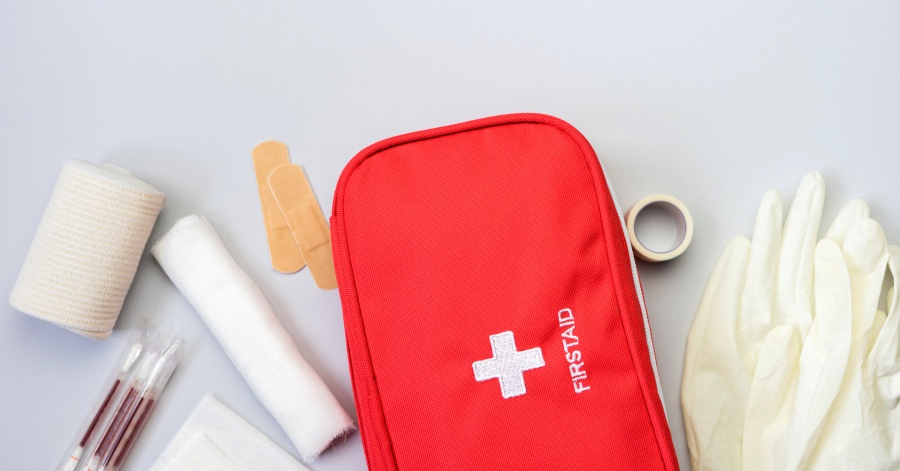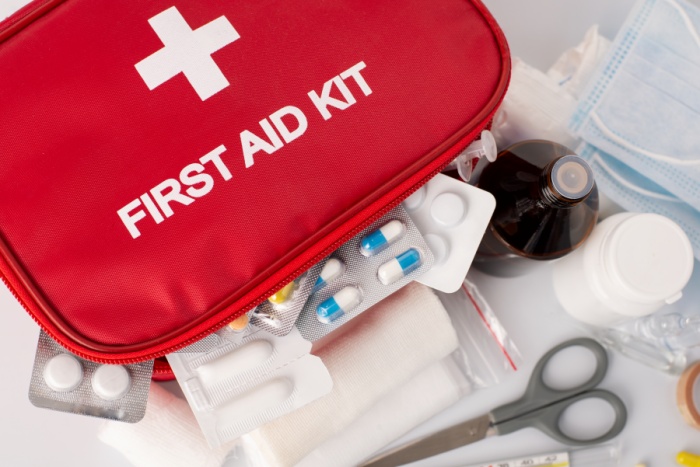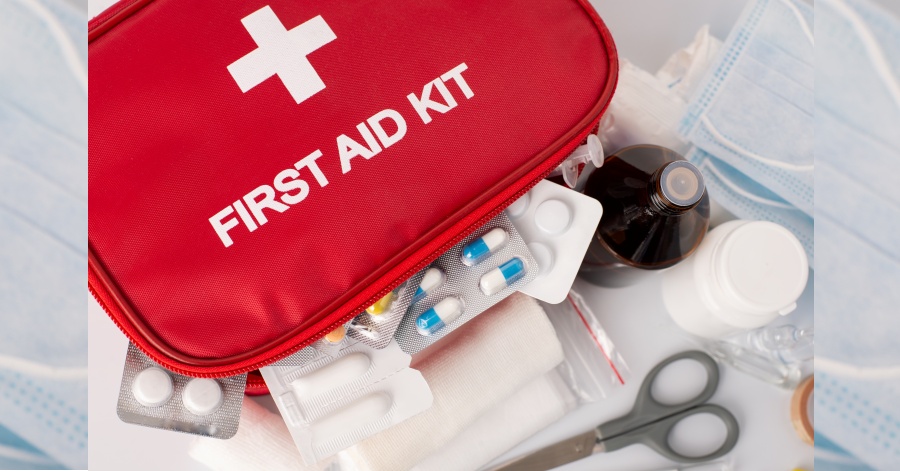Whether you’re at home, at school, in the workplace, or on the road — you can never know if or when an accident would happen. However, you can always be prepared to apply essential medical treatment, or at least make a call to someone who can. This is where a first aid kit comes in.
Your first aid kit is essentially your first line of defense when it comes to treating minor injuries or dealing with emergencies. You can easily buy a first aid kit from your local drugstore, but you could also create your own — based on you and your family’s particular health needs and concerns.

Create a First Aid Kit with These Essential Items
Before making your own first aid kit, be sure to have a sturdy and portable container to put the items in. Lightweight travel bags, or plastic containers with compartments — such as those used to store art supplies — are good options. The main idea is to have something that’s easy to reach, easy to carry, and convenient to use at a moment’s notice!
Having a first aid kit can help you treat minor injuries such as burns, cuts, scrapes, stings, and sprains. It should also contain items to address common symptoms of viral infections, such as sore throat, cough, fever, and nasal congestion. Moreover, it can also be used to carry medications for allergies, gastrointestinal problems, skin problems, mild pain, and other common ailments.
Here is a list of essential items that you should have in your first aid kit:
1. Sterile Gloves
When treating an open wound, sterile gloves can help provide extra protection, serving as a germ-free barrier between the patient as well as the “rescuer.” Make sure that you include at least one or two pairs of sterile gloves in your first aid kit.
2. Scissors and Tweezers
You can use tweezers to remove any dirt, debris, or splinter from a wound. Meanwhile, the scissors are used for cutting tape or gauze, as well as for removing clothing (to treat a wound) when necessary.
3. Sanitizing Agent
To help in cleaning and disinfecting wounds, make sure that your first aid kit contains a mild antiseptic, such as hydrogen peroxide or antibiotic towelettes.
4. Antibiotic Ointment
After cleaning the wound, be sure to apply antibiotic ointment as extra protection against infection, as well as for faster healing. The faster the wound heals, the lesser the chances of scarring!
5. Adhesive Bandages, Gauze, and Tape
You can never tell how big (or how long or how wide) a wound can be, so it helps to have different sizes of bandages and gauze in your first aid kit. Bandages can help protect the wound against dirt and infection. Meanwhile, for bigger or irregular-shaped wounds, cut some gauze into the required size, apply it to the cleaned and treated wound, and use some tape to hold it in place.
6. Elastic Wraps
In case of an ankle, knee, wrist, or elbow injury, you can use an elastic wrap to help stabilize the injured part as well as to keep the swelling down.
7. Triangular Bandages
For dislocated (or broken) arms and shoulders, you can use triangular bandages as a sling to help stabilize the injured part. Triangular bandages can also be used as a towel or tourniquet, as needed.
8. Cold Compress
For treating and soothing minor burns, sprains, insect stings, and other injuries, make sure that you have an instant cold compress in your first aid kit.
9. Pain Relievers
To help soothe minor aches and pains, it’s a good idea to have pain relievers such as ibuprofen, acetaminophen, or aspirin in your first aid kid. Be sure to use these correctly and only as approved and directed by a doctor.
10. Prescription Medications
Any prescribed medications, such as asthma inhalers, insulin, heart medications, and allergy medications should be stored in your first aid kit. While you’re at it, be sure to include a list of each family member’s allergies and medications as well.
11. First Aid Manual
Having a printed or hand-written manual — with details of how to use each item in your first aid kit — is also necessary. Take time to review this manual with your whole family. If you have a baby sitter or caregiver, make sure that he or she also knows where the first aid kit is and how to use it, in case you are going out or traveling for some time.
12. Emergency Phone Numbers
And last but certainly not the list, don’t forget to include a list of emergency phone numbers in your kit. This should include the numbers for your local health unit, ambulance, fire department, and police station. The list should also contain the numbers of your doctors and other persons that should be contacted in case of emergencies, such as relatives, neighbours, and close friends.

Some Additional Reminders
Aside from the above list, here are a few additional reminders with regard to your first aid kit:
1. Make multiple kits.
In addition to your first aid kit at home, make sure that you also have one in your car, office, travel trailer, vacation house, and other places that you usually go to. This way, you can easily face an emergency, wherever you may be!
2. Check expiration dates.
At least once every three months, check the expiration dates of medications and other items in your first aid kid. Don’t forget to replace any expired or missing items.
3. Include a phone card.
Having an extra phone card is essential, especially if you are going to travel. In case you run out of load — or if you might need to use someone else’s phone — having a phone card would definitely come in handy, so you can make emergency phone calls.
As mentioned earlier, you can never know when an accident or medical emergency would happen. However, you can always be ready and prepared by having a first aid kit on hand. What’s more, during the current global crisis, staying fit, healthy, alert, and ready is all the more important — and having a first aid kit is a good first step!
